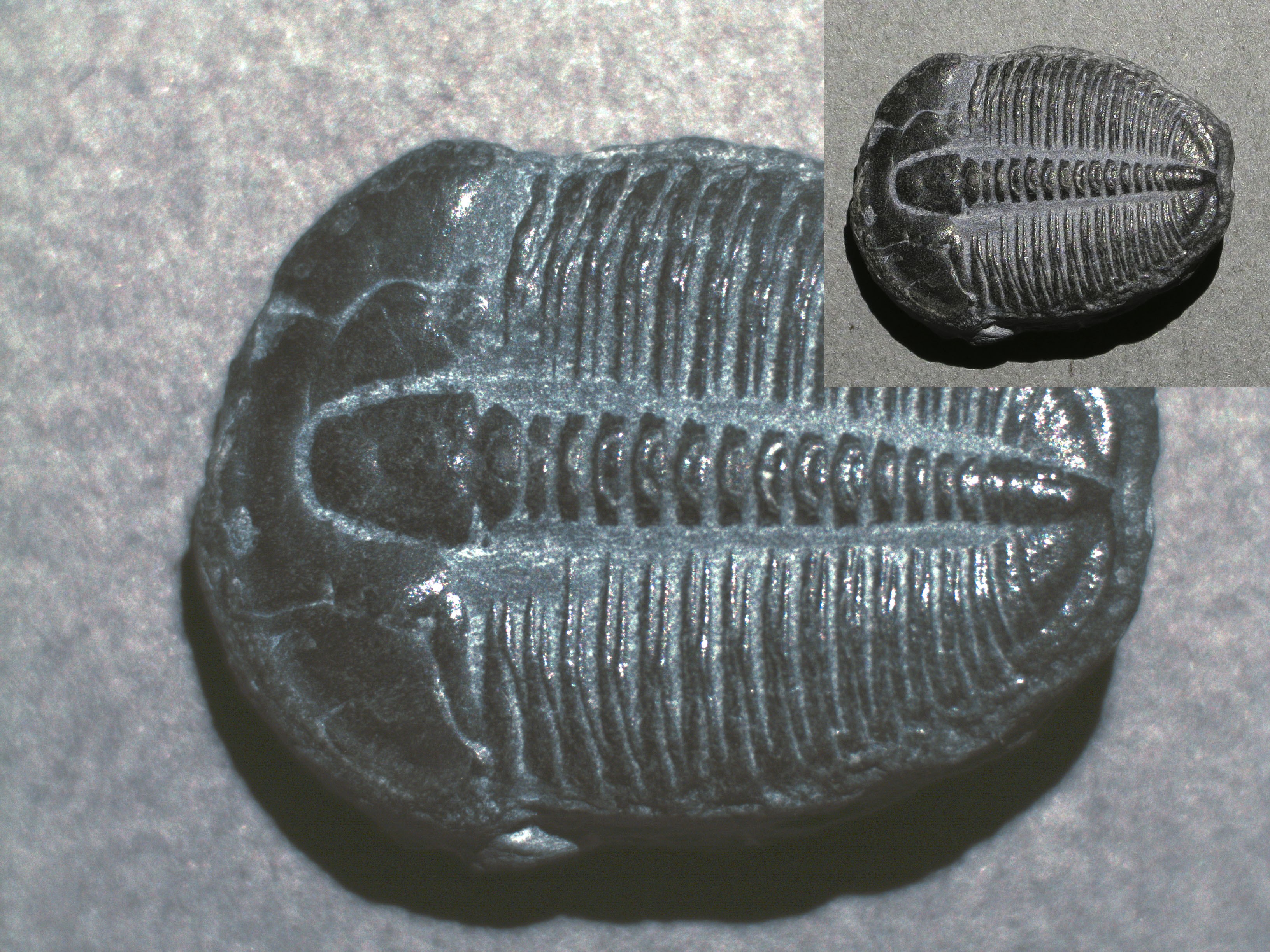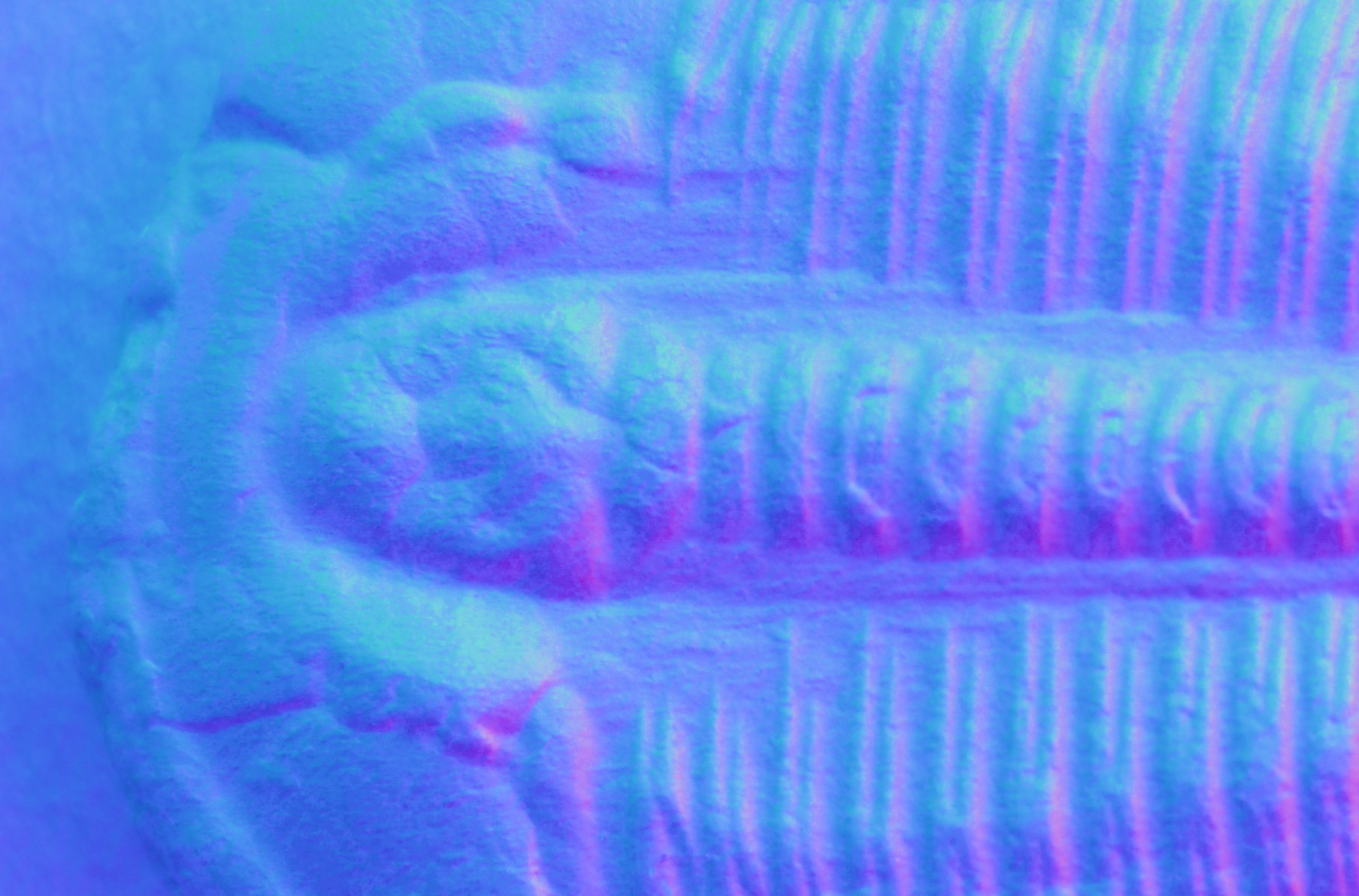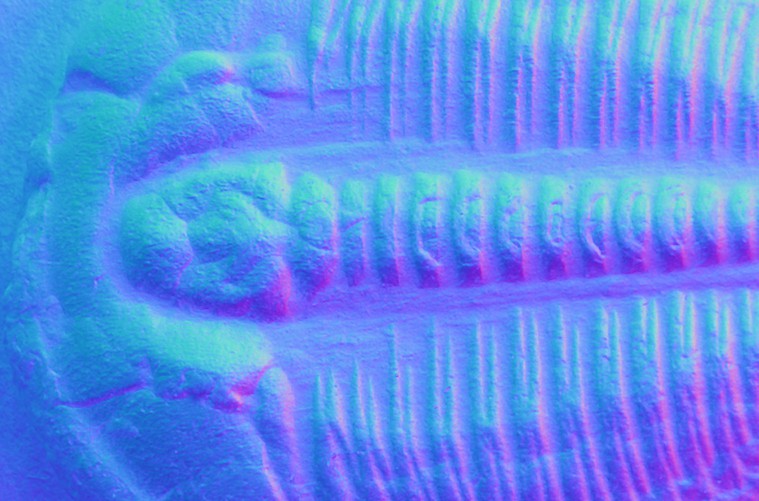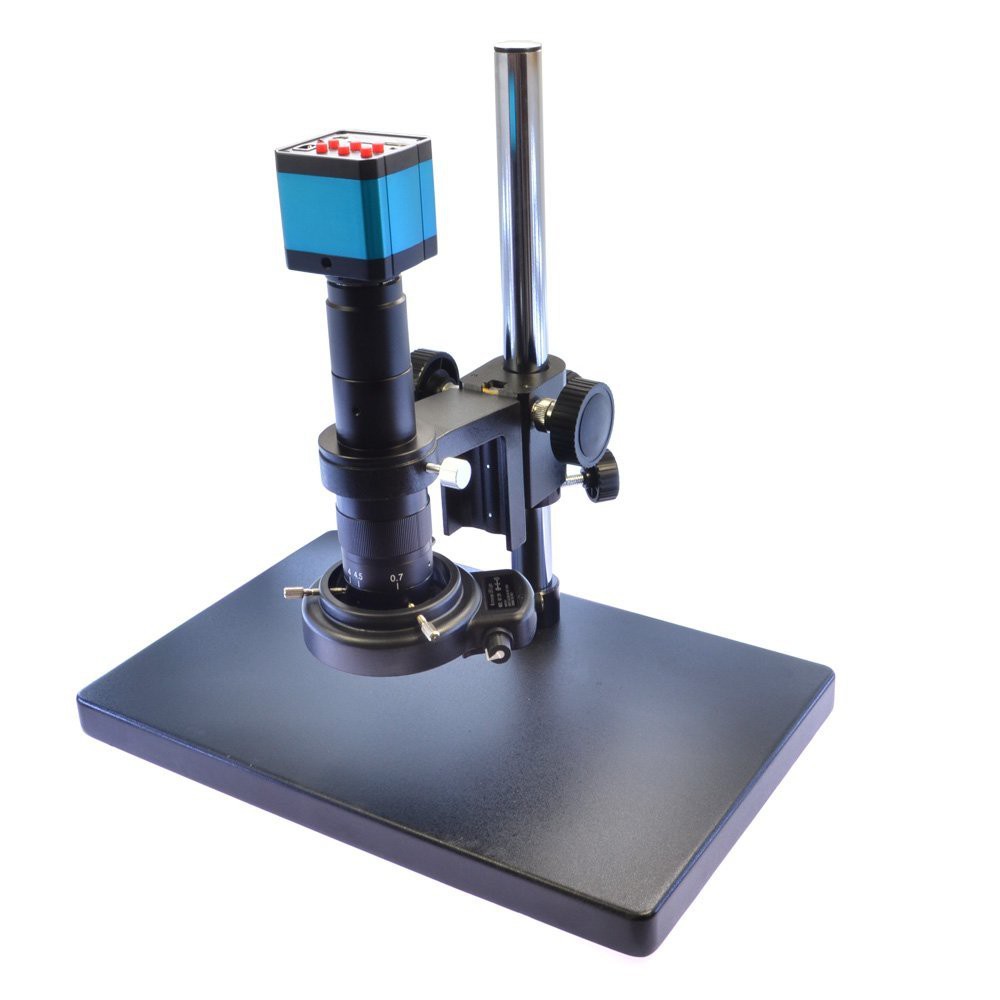Just posted instructions on adding the ability to fire a camera shutter from a computer program, using an Bluefruit EZ-Key board to send keyboard/mouse commands via Bluetooth. This could be useful if you're controlling a camera from a computer program instead of using the shutter remote; Canon and Nikon both make such software for their DSLRs. I've been using it instead for image capture with USB microscopes; these don't come with remote shutter capability, but do come with software that controls capture either with a keyboard command, or by clicking a "capture" button in the interface. Here's a video (sped up 4x) showing a capture sequence for a trilobite (Elrathia kingie, to be specific; Middle Cambrian, Wheeler Shale, Utah).
Here's a photo from that shoot, with the USB microscope image filling the full-screen, and a photo from my Canon S110 at maximum zoom as the inset. Both are at scale with respect to each other, compensating for the difference in image sensor resolution (8 MP for the USB microscope, 12 MP for the Canon).
 Bigger is better, right? Not necessarily. Generating RTI data for both sources, and zooming the images to comparable scales, I get this for the USB microscope (normals mode):
Bigger is better, right? Not necessarily. Generating RTI data for both sources, and zooming the images to comparable scales, I get this for the USB microscope (normals mode):
 And this for the camera:
And this for the camera:

While the original image dimensions are greater for the USB photo, the camera photo shows more detail. Don't know exactly why this is the case. The camera could have a better sensor/optics, camera autofocus might be more accurate than my manual focusing of the microscope, camera could have better of depth of field.
The USB microscope image was taken with the trilobite filling the full field, corresponding to a zoom level of 30x on the microscope. The microscope can go up to 200x, but there are problems with this. The higher the zoom level, the closer the microscope has to be to the object being photographed. And that can result in the microscope cylinder physically blocking light from the upper rows of LED from reaching the artifact. For the model of USB microscope I use, 50x power blocks all lights from the top row of LEDs; 100x blocks the top two rows; 150x and above blocks the top three rows. There are six rows in total, each with 8 LEDs, so for the highest magnification half the LEDs (24) are blocked. You can still get usable results with as few as 24-30 LEDs, but they're not optimal.
The setup in the video above has the USB microscope mounted in a telescope eyepiece focuser, since the dome is too small to house the microscope internally with its original stand mount. However, with larger domes (18" in diameter and up), you can put the microscope and stand underneath the dome. Since larger domes can have more rows of LEDs, there will be more light angles reaching the object. However, you can run into issues with parts of the stand blocking some of the LEDs. I hope to have software out soon that will simplify the processing of datasets with blocked lights.
Another option would be to find a USB microscope with a longer working distance; the further the microscope objective is from the object being photographed, the less likely it is to block LEDs. This is the model I'm currently using (which I paid $95 for), which can block up to half the rows; its working distance at highest magnification is about 3" (7.5 cm). This model, or this model, lists a working distance of 10.5-11.5 cm (about 4.6" max), which should result in less blocked lights. The camera sensor also has a resolution of 14 MP vs. my current USB microscope with 8 MP, which should improve overall resolution. Now I have to figure out a way to justify the substantially higher cost ($350+).

What's the conclusion? Not sure yet. I think that if you have a high-quality DSLR and a good macro lens, you should use that for now, as that will likely give you the best results; the drawback is the much higher cost for that (over $1000 for a decent DSLR and macro combination). It's possible that the higher-quality/longer working distance USB microscope might give even better results at an overall lower cost, but I'm not sure. If anyone would like to buy me one of the more advanced microscope systems so that I can check it out, I won't say no :).
Discussions
Become a Hackaday.io Member
Create an account to leave a comment. Already have an account? Log In.